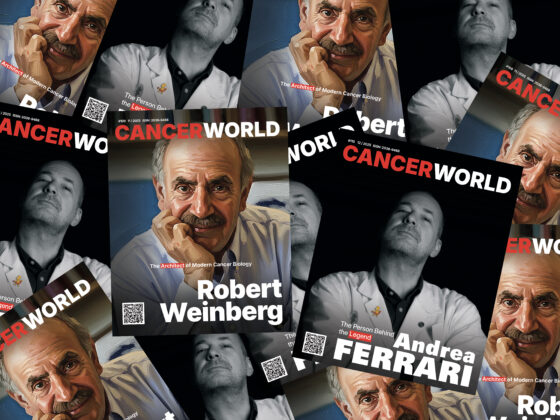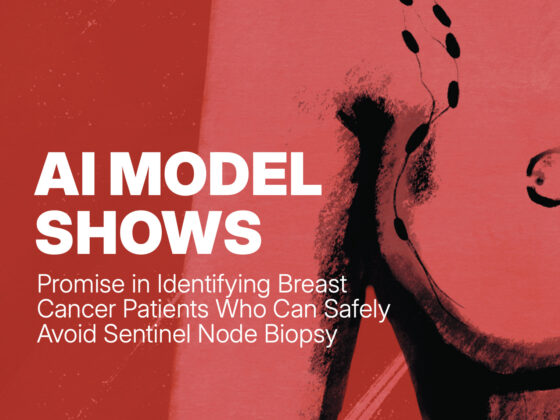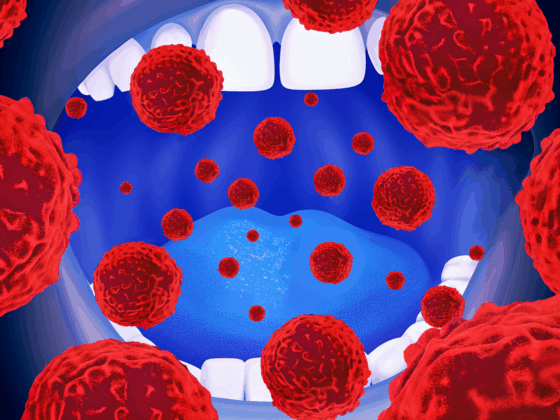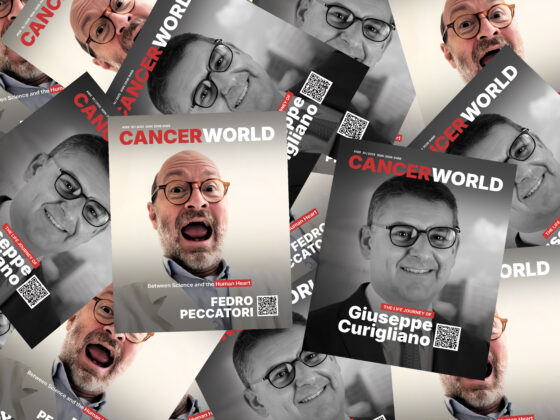The majority of high-risk patients diagnosed with pancreatic ductal adenocarcinoma (PDAC) while enrolled in a screening programme have stage I disease and can achieve long-term survival. The study, published in Journal of Clinical Oncology (June 15), found that in the US CAPS screening programmes the median survival of patients diagnosed with PDAC was 9.8 years.
“A clear majority of patients… who were diagnosed with pancreatic cancer were detected at the first stage of the disease if they maintained their surveillance,” says senior author, Michael Goggins, from Johns Hopkins Kimmel Cancer Center, Baltimore.
Pancreatic cancer five-year survival now approaches just 11% with the continued poor survival largely attributed to the late stage at which patients are diagnosed. However, the percentage of patients diagnosed with stage I pancreatic ductal adenocarcinoma has increased in the last decade, due to improvements in diagnostic imaging, better access to care leading to earlier diagnosis, and enrolment of more at-risk individuals into pancreatic surveillance programmes.
Pancreas surveillance has been recommended for people with a 5% or higher estimated lifetime risk of developing pancreatic cancer, with risk increasing according to number of first-degree relatives affected by pancreatic cancer, and in those pathogenic germline variants in pancreatic cancer susceptibility genes. The goal of the current study was to describe outcomes of the multicentre Cancer of Pancreas Screening 5 (CAPS 5) study, which opened in 2014. The investigators then combined data from the CAPS 5 study with that of the earlier CAPS 1, CAPS 2, CAPS 3 and CAPS 4 screening studies which ran between 1998 and 2014 at John Hopkins Medical Institutions.
For the CAPS 5 study, which took place between 2014 and 2021 at eight US institutions, 1,461 high-risk individuals were enrolled and provided with annual pancreatic imaging (involving magnetic resonance imaging or endoscopic ultrasound). Of these patients, 48.5% had a pathogenic variant in a PDAC-susceptibility gene (18.4% with BRCA2 and 6.4% with an ATM variant), and around one third a personal history of cancer, with breast cancer being the most commonly reported (15.8% affected).
Altogether 10 patients were diagnosed with pancreatic cancer, including one who was diagnosed four years after dropping out of recommended surveillance.
Seven of the remaining nine patient (77.8%) were diagnosed with stage I disease. Of the two others, one had stage IIB disease and the other stage III disease.
Seven of the patients were alive at a median follow-up of 2.6 years.
Eight other participants had pancreatic surgeries for concerning lesions detected during surveillance, including three people with high-grade dysplasia precancerous conditions, and five with low-grade dysplasia.
Also, within this study period 73 patients were diagnosed with other cancers including 17 cases of breast cancer and 11 cases of prostate.
Combining the CAPS 5 data with data from previous Johns Hopkins Medicine CAPS studies yielded an entire CAPS cohort of 1,731 patients. The combined results show that 19 of the 26 cases of pancreatic cancer were diagnosed in patients who maintained their cancer surveillance, of whom 57.9% had stage I cancers, 15.8% stage II, 21.1% stage III and 5.2% stage IV. By contrast, six of seven pancreatic cancers detected in patients who stopped their annual surveillance (85.7%) were stage IV.
The median overall survival was 9.8 years for patients who continued surveillance versus 1.5 years for those who discontinued surveillance (HR 0.13; 95% CI 0.03-0.50; P=0.003).
“Many of those diagnosed with pancreatic cancer under surveillance can be potentially cured. By contrast, people who drop off their surveillance had poor survival rates,” says Goggins,
“The low diagnostic yield of PDACs in our cohort highlights the need to develop more refined estimates of pancreatic cancer risk,” write the authors. “Better estimates of risk would help determine who should undergo surveillance, and at what age surveillance should begin.”
Pancreatic surveillance, says Goggins, is best undertaken at expert centres by multidisciplinary teams because some of the abnormalities that show up are of uncertain significance.
Commenting on the CAPS findings, Bill Greenhalf, from the University of Liverpool, UK, says that they differ markedly from those of the Dutch Familial Pancreatic Surveillance study group, published in Gut (online 5 April 2021). “The Dutch study had a much higher yield for pancreatic cancers, but they were diagnosed at a later stage when the disease is nearly always incurable. Unlike the CAPS studies, the Dutch also did not find any cancers in people with just a family history without known causative mutations,” says Greenhalf, who is Chief Scientific Investigator of EUROPAC, a UK study exploring ways to improve screening of pancreatic cancer. “I suspect the differences relate to the nature of recruitment. In Europe it’s much more challenging for patients to get a diagnosis, with the result that some of the Dutch participants may have been using the screening programme after they had vague but worrying symptoms as a way of getting a diagnosis.”
In Europe, Greenhalf adds, there are now a number of guidelines outlining pancreatic cancer screening, including the NICE guidelines, published in February 2018. The NICE guidelines state:
- Surveillance should be offered to people with hereditary pancreatitis and a PRSS1 mutation; BRCA1, BRCA2, PALB2 or CDKN2A (p16) mutations and one or more first degree relatives with pancreatic cancer; and people with Peutz-Jeghers syndrome.
- Surveillance should be considered for people with two or more first-degree relatives with pancreatic cancer across two or more generations; and Lynch syndrome and any first degree relative with pancreatic cancer.
“Despite the guidelines”, says Greenhalf
The majority of high-risk patients diagnosed with pancreatic ductal adenocarcinoma (PDAC) while enrolled in a screening programme have stage I disease and can achieve long-term survival. The study, published in Journal of Clinical Oncology (June 15), found that in the US CAPS screening programmes the median survival of patients diagnosed with PDAC was 9.8 years.
“A clear majority of patients… who were diagnosed with pancreatic cancer were detected at the first stage of the disease if they maintained their surveillance,” says senior author, Michael Goggins, from Johns Hopkins Kimmel Cancer Center, Baltimore.
Pancreatic cancer five-year survival now approaches just 11% with the continued poor survival largely attributed to the late stage at which patients are diagnosed. However, the percentage of patients diagnosed with stage I pancreatic ductal adenocarcinoma has increased in the last decade, due to improvements in diagnostic imaging, better access to care leading to earlier diagnosis, and enrolment of more at-risk individuals into pancreatic surveillance programmes.
Pancreas surveillance has been recommended for people with a 5% or higher estimated lifetime risk of developing pancreatic cancer, with risk increasing according to number of first-degree relatives affected by pancreatic cancer, and in those pathogenic germline variants in pancreatic cancer susceptibility genes. The goal of the current study was to describe outcomes of the multicentre Cancer of Pancreas Screening 5 (CAPS 5) study, which opened in 2014. The investigators then combined data from the CAPS 5 study with that of the earlier CAPS 1, CAPS 2, CAPS 3 and CAPS 4 screening studies which ran between 1998 and 2014 at John Hopkins Medical Institutions.
For the CAPS 5 study, which took place between 2014 and 2021 at eight US institutions, 1,461 high-risk individuals were enrolled and provided with annual pancreatic imaging (involving magnetic resonance imaging or endoscopic ultrasound). Of these patients, 48.5% had a pathogenic variant in a PDAC-susceptibility gene (18.4% with BRCA2 and 6.4% with an ATM variant), and around one third a personal history of cancer, with breast cancer being the most commonly reported (15.8% affected).
Altogether 10 patients were diagnosed with pancreatic cancer, including one who was diagnosed four years after dropping out of recommended surveillance.
Seven of the remaining nine patient (77.8%) were diagnosed with stage I disease. Of the two others, one had stage IIB disease and the other stage III disease.
Seven of the patients were alive at a median follow-up of 2.6 years.
Eight other participants had pancreatic surgeries for concerning lesions detected during surveillance, including three people with high-grade dysplasia precancerous conditions, and five with low-grade dysplasia.
Also, within this study period 73 patients were diagnosed with other cancers including 17 cases of breast cancer and 11 cases of prostate.
Combining the CAPS 5 data with data from previous Johns Hopkins Medicine CAPS studies yielded an entire CAPS cohort of 1,731 patients. The combined results show that 19 of the 26 cases of pancreatic cancer were diagnosed in patients who maintained their cancer surveillance, of whom 57.9% had stage I cancers, 15.8% stage II, 21.1% stage III and 5.2% stage IV. By contrast, six of seven pancreatic cancers detected in patients who stopped their annual surveillance (85.7%) were stage IV.
The median overall survival was 9.8 years for patients who continued surveillance versus 1.5 years for those who discontinued surveillance (HR 0.13; 95% CI 0.03-0.50; P=0.003).
“Many of those diagnosed with pancreatic cancer under surveillance can be potentially cured. By contrast, people who drop off their surveillance had poor survival rates,” says Goggins,
“The low diagnostic yield of PDACs in our cohort highlights the need to develop more refined estimates of pancreatic cancer risk,” write the authors. “Better estimates of risk would help determine who should undergo surveillance, and at what age surveillance should begin.”
Pancreatic surveillance, says Goggins, is best undertaken at expert centres by multidisciplinary teams because some of the abnormalities that show up are of uncertain significance.
Commenting on the CAPS findings, Bill Greenhalf, from the University of Liverpool, UK, says that they differ markedly from those of the Dutch Familial Pancreatic Surveillance study group, published in Gut (online 5 April 2021). “The Dutch study had a much higher yield for pancreatic cancers, but they were diagnosed at a later stage when the disease is nearly always incurable. Unlike the CAPS studies, the Dutch also did not find any cancers in people with just a family history without known causative mutations,” says Greenhalf, who is Chief Scientific Investigator of EUROPAC, a UK study exploring ways to improve screening of pancreatic cancer. “I suspect the differences relate to the nature of recruitment. In Europe it’s much more challenging for patients to get a diagnosis, with the result that some of the Dutch participants may have been using the screening programme after they had vague but worrying symptoms as a way of getting a diagnosis.”
In Europe, Greenhalf adds, there are now a number of guidelines outlining pancreatic cancer screening, including the NICE guidelines, published in February 2018. The NICE guidelines state:
- Surveillance should be offered to people with hereditary pancreatitis and a PRSS1 mutation; BRCA1, BRCA2, PALB2 or CDKN2A (p16) mutations and one or more first degree relatives with pancreatic cancer; and people with Peutz-Jeghers syndrome.
- Surveillance should be considered for people with two or more first-degree relatives with pancreatic cancer across two or more generations; and Lynch syndrome and any first degree relative with pancreatic cancer.
“Despite the guidelines”, says Greenhalf
The majority of high-risk patients diagnosed with pancreatic ductal adenocarcinoma (PDAC) while enrolled in a screening programme have stage I disease and can achieve long-term survival. The study, published in Journal of Clinical Oncology (June 15), found that in the US CAPS screening programmes the median survival of patients diagnosed with PDAC was 9.8 years.
“A clear majority of patients… who were diagnosed with pancreatic cancer were detected at the first stage of the disease if they maintained their surveillance,” says senior author, Michael Goggins, from Johns Hopkins Kimmel Cancer Center, Baltimore.
Pancreatic cancer five-year survival now approaches just 11% with the continued poor survival largely attributed to the late stage at which patients are diagnosed. However, the percentage of patients diagnosed with stage I pancreatic ductal adenocarcinoma has increased in the last decade, due to improvements in diagnostic imaging, better access to care leading to earlier diagnosis, and enrolment of more at-risk individuals into pancreatic surveillance programmes.
Pancreas surveillance has been recommended for people with a 5% or higher estimated lifetime risk of developing pancreatic cancer, with risk increasing according to number of first-degree relatives affected by pancreatic cancer, and in those pathogenic germline variants in pancreatic cancer susceptibility genes. The goal of the current study was to describe outcomes of the multicentre Cancer of Pancreas Screening 5 (CAPS 5) study, which opened in 2014. The investigators then combined data from the CAPS 5 study with that of the earlier CAPS 1, CAPS 2, CAPS 3 and CAPS 4 screening studies which ran between 1998 and 2014 at John Hopkins Medical Institutions.
For the CAPS 5 study, which took place between 2014 and 2021 at eight US institutions, 1,461 high-risk individuals were enrolled and provided with annual pancreatic imaging (involving magnetic resonance imaging or endoscopic ultrasound). Of these patients, 48.5% had a pathogenic variant in a PDAC-susceptibility gene (18.4% with BRCA2 and 6.4% with an ATM variant), and around one third a personal history of cancer, with breast cancer being the most commonly reported (15.8% affected).
Altogether 10 patients were diagnosed with pancreatic cancer, including one who was diagnosed four years after dropping out of recommended surveillance.
Seven of the remaining nine patient (77.8%) were diagnosed with stage I disease. Of the two others, one had stage IIB disease and the other stage III disease.
Seven of the patients were alive at a median follow-up of 2.6 years.
Eight other participants had pancreatic surgeries for concerning lesions detected during surveillance, including three people with high-grade dysplasia precancerous conditions, and five with low-grade dysplasia.
Also, within this study period 73 patients were diagnosed with other cancers including 17 cases of breast cancer and 11 cases of prostate.
Combining the CAPS 5 data with data from previous Johns Hopkins Medicine CAPS studies yielded an entire CAPS cohort of 1,731 patients. The combined results show that 19 of the 26 cases of pancreatic cancer were diagnosed in patients who maintained their cancer surveillance, of whom 57.9% had stage I cancers, 15.8% stage II, 21.1% stage III and 5.2% stage IV. By contrast, six of seven pancreatic cancers detected in patients who stopped their annual surveillance (85.7%) were stage IV.
The median overall survival was 9.8 years for patients who continued surveillance versus 1.5 years for those who discontinued surveillance (HR 0.13; 95% CI 0.03-0.50; P=0.003).
“Many of those diagnosed with pancreatic cancer under surveillance can be potentially cured. By contrast, people who drop off their surveillance had poor survival rates,” says Goggins,
“The low diagnostic yield of PDACs in our cohort highlights the need to develop more refined estimates of pancreatic cancer risk,” write the authors. “Better estimates of risk would help determine who should undergo surveillance, and at what age surveillance should begin.”
Pancreatic surveillance, says Goggins, is best undertaken at expert centres by multidisciplinary teams because some of the abnormalities that show up are of uncertain significance.
Commenting on the CAPS findings, Bill Greenhalf, from the University of Liverpool, UK, says that they differ markedly from those of the Dutch Familial Pancreatic Surveillance study group, published in Gut (online 5 April 2021). “The Dutch study had a much higher yield for pancreatic cancers, but they were diagnosed at a later stage when the disease is nearly always incurable. Unlike the CAPS studies, the Dutch also did not find any cancers in people with just a family history without known causative mutations,” says Greenhalf, who is Chief Scientific Investigator of EUROPAC, a UK study exploring ways to improve screening of pancreatic cancer. “I suspect the differences relate to the nature of recruitment. In Europe it’s much more challenging for patients to get a diagnosis, with the result that some of the Dutch participants may have been using the screening programme after they had vague but worrying symptoms as a way of getting a diagnosis.”
In Europe, Greenhalf adds, there are now a number of guidelines outlining pancreatic cancer screening, including the NICE guidelines, published in February 2018. The NICE guidelines state:
- Surveillance should be offered to people with hereditary pancreatitis and a PRSS1 mutation; BRCA1, BRCA2, PALB2 or CDKN2A (p16) mutations and one or more first degree relatives with pancreatic cancer; and people with Peutz-Jeghers syndrome.
- Surveillance should be considered for people with two or more first-degree relatives with pancreatic cancer across two or more generations; and Lynch syndrome and any first degree relative with pancreatic cancer.
“Despite the guidelines”, says Greenhalf “screening uptake in the UK is low because most people don’t know how to evaluate their risks. Ask yourself the question: of the people who have died in my family over the generations, in how many cases do I really know the cause of death? Parents, certainly; grandparents maybe; but more distant relatives? Probably not. This has the consequence that few of us are able to say with certainty whether we do or don’t qualify for screening under NICE guidelines, and even if we do, we still have to convince a potentially sceptical doctor for a referral.” The solution, he adds, is to provide better access to clinical geneticists with the time and energy to carry out an in depth appraisals. “And what would make this easier (as Michael Goggins says in his paper) is to develop better approaches for evaluating risk,” says Greenhalf.
screening uptake in the UK is low because most people don’t know how to evaluate their risks. Ask yourself the question, of the people who have died in my family over the generations, in how many cases do I really know the cause of death? Parents, certainly; grandparents maybe; but more distant relatives? Probably not. This has the consequence that few of us are able to say with certainty whether we do or don’t qualify for screening under NICE guidelines and even if we do, we still have to convince a potentially sceptical doctor for a referral,” says Greenhalf. The solution, he adds, is to provide better access to clinical geneticists with the time and energy to carry out an in depth appraisals. “And what would make this easier (as Michael Goggins says in his paper) is to develop better approaches for evaluating risk,” says Greenhalf.
screening uptake in the UK is low because most people don’t know how to evaluate their risks. Ask yourself the question, of the people who have died in my family over the generations, in how many cases do I really know the cause of death? Parents, certainly; grandparents maybe; but more distant relatives? Probably not. This has the consequence that few of us are able to say with certainty whether we do or don’t qualify for screening under NICE guidelines and even if we do, we still have to convince a potentially sceptical doctor for a referral,” says Greenhalf. The solution, he adds, is to provide better access to clinical geneticists with the time and energy to carry out an in depth appraisal. “And what would make this easier (as Michael Goggins says in his paper) is to develop better approaches for evaluating risk,” says Greenhalf.












